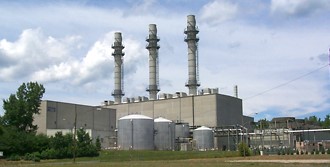By Ted Caddell
The staff of the Federal Energy Regulatory Commission last week accused a Canadian independent power producer of misrepresenting the output of its three New England generators and its cost of fuel in schemes that the staff says netted the company millions in inflated payments.
FERC issued a Staff Notice of Alleged Violations (NAV) last week naming Calgary-based Maxim Power Corp., its CEO, John Bobenic, and Kyle Mitton, director of corporate development, as the targets of its investigation.
The NAV indicates that FERC enforcement staff has completed its investigation. Most FERC enforcement cases that become public are quickly settled. If Maxim declines to settle, the next step may be a commission vote on whether to issue an Order to Show Cause.
In May, Maxim disclosed to investors that FERC had accused the company of receiving unjust gains of $23 million. The company said it repaid about $3 million in 2010 through “the ISO-NE mitigation program.”
FERC staff alleges that Maxim collected “millions of dollars of inflated make-whole payments” from ISO-NE between 2012 and 2013 by gaming an ISO rule intended to mitigate the market power of generators needed for reliability. The notice did not elaborate on how this was allegedly done.
In a second alleged scheme in July and August 2010, Maxim submitted offers it said were based on high oil prices because it couldn’t procure enough natural gas. FERC says the company collected make-whole payments based on the oil price but actually burned cheaper natural gas and pocketed the difference. “In many cases Maxim had already purchased gas when it submitted day-ahead offers based on oil prices,” FERC said.
In the third allegation, FERC said that Maxim collected inflated capacity payments between 2010 and 2013 by using “extraordinary measures” to boost the output of its three New England plants during testing. It said that the “extraordinary measures” were used only during the tests, and that Maxim never intended to use those methods during normal operations.
FERC offered no details on what those measures were. There are several ways of temporarily boosting the output of gas-fired generating plants, including disconnecting emissions controls and using different fuel-air mixtures.
Maxim officials did not respond to requests for comment yesterday. In a news release last week, the company said it is cooperating with FERC’s inquiry and stressed that a NAV “is not a determination by FERC that any violation has occurred.”
“Maxim intends to vigorously defend itself before FERC or a federal district court and is confident it can demonstrate that the conduct set forth in the notice did not violate FERC’s anti-manipulation rule or any other rule.”
ISO-NE spokeswoman Marcia Blomberg told RTO Insider “we support FERC investigations by providing information to the commission, but we don’t discuss market enforcement activities publicly.”
Maxim operates three plants in the ISO-NE region: CDECCA, a 62-MW cogeneration plant in Hartford, Conn.; Pawtucket Power, a 63.5-MW cogeneration plant in Pawtucket, R.I.; and a 181-MW natural gas-fired plant in Pittsfield, Mass.
In total, the company owns and operates 39 power plants in Alberta, the U.S. and France, with a combined 777 MW of capacity. Its other U.S. plants are the Basin Creek natural gas-fired plant in Montana and a simple cycle 87-MW plant in Forked River, N.J.
The company, which trades on the Toronto Stock Exchange, reported $10.6 million in net income on $173.7 million in revenue for 2013.
CEO John R. Bobenic, an accountant, joined Maxim in October 2000 after stints at Peat, Marwick, Mitchell & Co. and TransAlta. He is a past vice chair of the Independent Power Producers Society of Alberta.
New York/New England Correspondent William Opalka contributed to this article.


